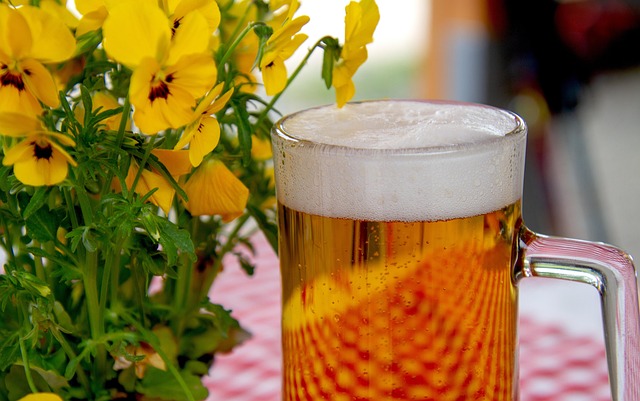
I’m obsessed with sour beer—that lip-smacking, tangy brew that hits you with a burst of fruit and funk. When I first thought about brewing sour beer at home, I was nervous it’d be too complicated, but let me tell you, it’s way easier than it sounds and so much fun.
I’ve poured my heart into perfecting my process, and I’m excited to share my journey, complete with all the tips, flops, and victories that make homebrewing sour beer a blast. Grab a glass, and let’s dive into crafting your own tart masterpiece.
Falling for Sour Beer’s Charm
My first sip of a sour beer was a revelation—bright, tart, with a wild edge that made my taste buds dance. It’s not just beer; it’s an adventure, thanks to funky bacteria like Lactobacillus and wild yeasts like Brettanomyces.
I started with kettle souring because it’s quick and forgiving for beginners like I was. You sour the wort before boiling, and in a couple of days, you’ve got that zesty kick. I aim for a pH of 3.3-3.8—my cheap pH strips are a lifesaver for nailing that perfect tartness.
My Go-To Ingredients
I keep my sour beer recipe straightforward but picky about quality. For a 5-gallon batch, I grab 8 pounds of Pilsner malt for a crisp base and 2 pounds of wheat malt for a smooth, frothy feel.
Hops are barely a cameo—0.5 ounces of gentle Saaz early in the boil keeps things mellow. The real MVPs are the microbes: I pitch Lactobacillus from White Labs for fast souring and toss in Brettanomyces later for that barnyard vibe I love.
Fruit’s my secret weapon—1 pound of frozen raspberries or cherries per gallon in secondary fermentation adds a juicy pop. Frozen’s my hack; it’s cheap and ready to go.
Water’s a quiet hero. I use filtered tap water, tweaking with a dash of lactic acid to keep the acidity sharp. For that barrel-aged glow, I soak oak chips in whiskey (sanitized, obviously) to sneak in vanilla and oak notes without breaking the bank.
My Brewing Routine, Step by Step
Here’s how I make sour beer at home, from kettle to bottle. I start by sanitizing everything with Star San—those sour bugs are sneaky and can ruin other brews. I mash my grains at 152°F for an hour, sparge, and collect the wort.
For kettle souring, I heat it to 180°F to zap any bad microbes, cool to 100°F, and add Lactobacillus. I wrap my kettle in an old quilt to keep it cozy for 24-48 hours, checking the pH until it’s just right.
Then I boil for an hour with a pinch of hops, cool to 68°F, and pitch a fruity Belgian yeast. After a week of primary fermentation, I move it to a glass carboy, toss in fruit or oak chips, and sometimes Brett for extra funk.
This part’s a waiting game—3 to 12 months, with monthly sips to see how it’s evolving. When it’s ready, I bottle with 4 ounces of priming sugar for fizz or keg at 12 PSI. Trust me, don’t rush it; patience makes the magic happen.
Getting Fancy with My Brews
Once I got comfy, I started playing. I tried a solera setup, pulling a bit of beer from an oak barrel and adding fresh wort to keep the party going. It’s like a never-ending flavor experiment.
I’ve also messed with mixed cultures from Bootleg Biology for that old-school Lambic vibe. Dry hopping with Mosaic gives a citrusy zing, and pureed mango makes my sours taste like a tropical vacation.
I splurged on a tiny oak barrel last year, sanitizing it with steam and seeding it with dregs from a Russian River sour. Keeping a notebook for gravity, pH, and tasting notes keeps me sane and helps me recreate my best batches.
My Biggest Brewing Bloopers
I’ve had some epic fails. Once, I let Lactobacillus run too long, and my beer was like lemon extract—blending it with a milder batch saved it. Another time, a loose seal let oxygen in, turning my brew vinegary.
Now I’m a CO2-purging fanatic. A weird, slimy pellicle? Straight to the dump to save my gear. And overripe fruit? Never again—frozen or pasteurized is the way. My worst mistake was bottling too early; I dodged bottle bombs, but it was a wake-up call.
Sipping and Sharing the Good Stuff
Cracking open a homemade sour beer is pure joy. I chill mine to 45°F and pour into a tulip glass to catch every aroma. A cherry sour with a wedge of brie is heaven, and a raspberry one with grilled fish is summer on a plate.
I’ve started mixing sours into cocktails—a sour shandy with lemonade is my go-to. I love hosting tasting nights, swapping stories with friends over growlers, and geeking out on r/Homebrewing.
Growing My Brew Game
I’ve leveled up to 10-gallon batches to save time, using a bigger fermenter and a pump I snagged on sale. A secondhand glycol chiller keeps my temps steady for long aging.
I try to brew green—reusing yeast, composting spent grains, and buying local malt. After a few batches, I’m saving cash compared to store-bought sours, plus I get to brag about my creations.
I’m hooked on experimenting—sour stouts with cocoa, ginger-spiked sours, you name it. I even teamed up with a local brewer for a barrel share, which felt like joining the cool kids’ club. My advice? Jump in, mess around, and savor every tart, funky sip of your homemade sour beer. It’s a craft that’s as rewarding as it is delicious.